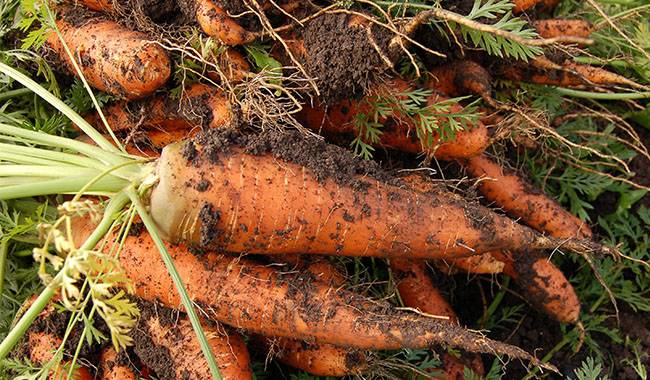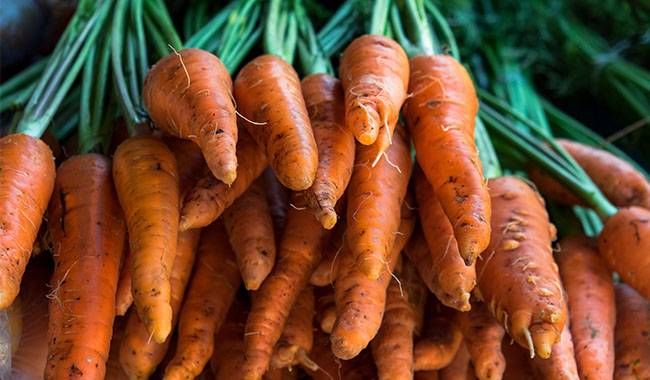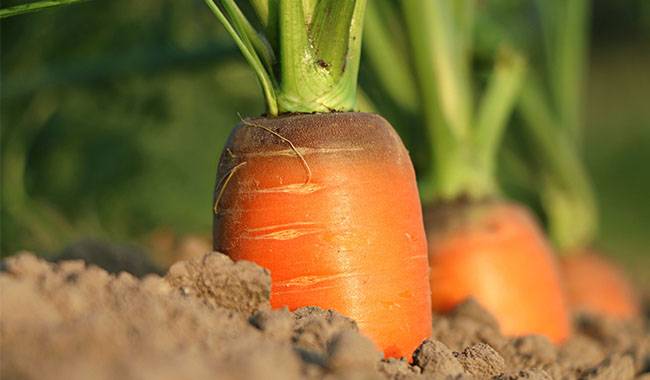
Carrots are a frequent visitor to our table, they are root vegetables, the source of carotene, and our orange miracle. It is one of our favorite and most important vegetables. Next, how to grow carrots.
Carrots are widely used in cooking. They can be used to squeeze juice whether they are eaten raw or when making various dishes.
About the history of carrots
According to scientists, carrots were first cultivated in Afghanistan, where most varieties still grow. Originally, carrots were not planted for roots, but for fragrant leaves and seeds.
The first mention of eating carrots was in ancient documents in the first century AD. Archaeological studies say that carrots were planted much earlier, almost two thousand years BC.
Modern carrots have spread to Europe from the 10th to the 13th century. Yellow and white root crops were first cultivated, and orange carrots were only mentioned in the early 18th century. And legend has it that in the Middle Ages, carrots were considered a delicacy for dwarfs, and they exchanged this root crop for gold bars.
Carrot planting requirements
Carrots are a very demanding crop, especially in terms of soil requirements. It likes to grow on fertile, sunny, loose, permeable, weed-free soil.
The best place to grow carrots is where fertilizer was applied 1-2 years ago because carrots respond very poorly to fresh fertilizer. In this case, many ugly, branched root crops have very poor palatability.
In addition, how to grow carrots? custom carrots can be grown under the following conditions:
- If you apply chlorine-containing fertilizers, the roots will bend or branch;
- If the soil is deoxidized on the eve of planting, the carrots will become multi-tailed;
- If there are any obstacles in the soil, such as pebbles, organic residues, etc.;
- If there is too much water in the soil, the root crops will become hairy or cracked, causing unnecessary growth on the surface;
- If you fertilize and feed nitrogen fertilizer unnecessarily, carrots will start branching.
- If we omit the seedlings incorrectly;
- If there is insufficient water during the growth of carrots and the carrots try to absorb water from the soil, they will release lateral roots, which will have an adverse effect on their taste and appearance (the flesh becomes thicker and the root crops are short and “horny”).
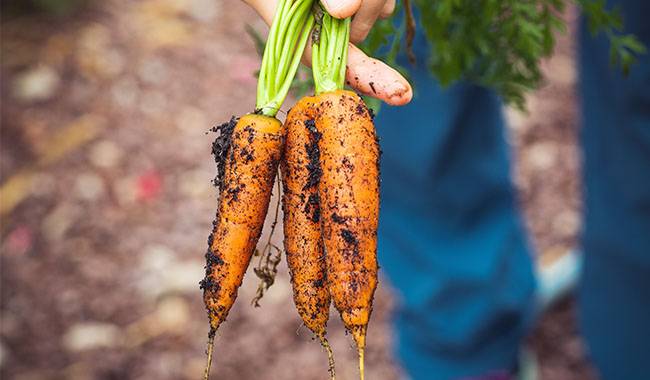
Therefore, the soil that is going to grow carrots should be treated very carefully.
How to prepare?
First of all, how to grow carrots? it is best to prepare from the autumn: dig thoroughly; if you need to harrow the soil, use lime or dolomite when digging; you can also add phosphorus and potassium fertilizers. Moreover, under normal circumstances, various additives are better done in the soil under the carrot, given what type of soil your site is.
If your soil is peat soil, you might as well add river sand, humus soil, and clay. If the soil is clay-river sand, peat, humus, use fertile black soil to make sand only in spring.
Second, in the spring, the area under the carrots prepared from the fall needs to be deep enough to loosen the soil, and compound mineral fertilizer has been added before; try to choose all the stones so that it will not affect the growth of the plants.
Another important condition for carrot growth is a good light for the crop. Shading has a very negative effect on the growth of plants, especially in the early stages. If our planting is overgrown with weeds, there are a lot of weeds, carrots are pulled out, and the formation of root crops is slow, forming many small root crops (so-called poor growth).
Carrots are relatively cold and drought-tolerant plants. Its sprouts can withstand frost of minus 2 degrees, and the mature plants can withstand frost of minus 4 degrees. However, root crops that withstand frost will be less brittle.
Carrot seeds can germinate at temperatures above 3 degrees, and the optimum temperature for their growth is around 18-25 degrees. If the temperature rises above 25 degrees, plant growth will slow down. When choosing a site for growing carrots, it is best to consider that its best predecessor is such plants: tomatoes, beans, cabbage, potatoes, cucumbers, green crops.
In addition to this article “How to grow carrots?” If you are a new gardener, we recommend “HOW TO START A GARDEN FOR BEGINNERS: TOP 10 GARDENING TIPS” to you.
Sowing time of carrots
There are several sowing times for carrots, depending on when and for what purpose we want to harvest.
The next planting period is from mid-May to early June (summer planting). Now is the anchor season of carrots, we will put carrots in winter storage. If we want to get young carrots in the fall, we can plant short-cut varieties as early as mid-July.
And winter planting (October 20 to November 15) can provide us with an earlier harvest. But not every plot is suitable for this. For winter sowing, we should choose such a place in our garden. The snow melts earlier in spring and the soil should be light sandy loam so that the crops will not be flooded in spring.
When sowing in winter, only disinfect it and then dry it. In spring, they will become moist, swell up, and sprout naturally. It is not recommended to germinate the seeds, because germination will freeze. Using these sowing dates, we can eat fresh carrots from summer to next spring.
In addition, when the late-maturing carrots were sown for more than 20 days in June, the growth period of the plants did not coincide with the period when the carrot fly (a South American spotted diving flies) was the most active (May), and better quality root crops could be grown…
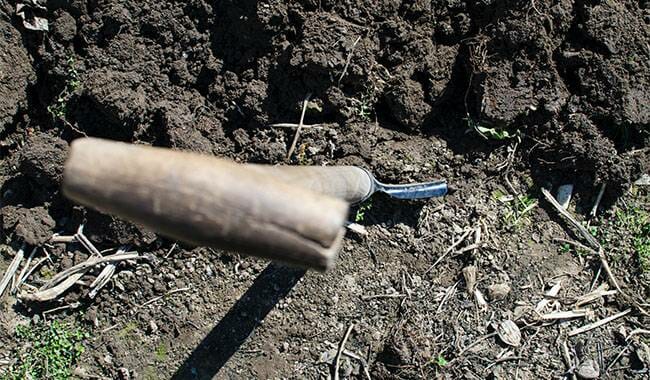
How to sow carrot seeds
Carrot seeds contain a lot of essential oils, which can prevent water from entering the germ quickly and delay germination. Therefore, the pre-sow preparation work should be carried out before sowing: disinfection, soaking, and germination.
About how to disinfect seeds, as well as the correct soaking and germination, you can read in the next article.
Then we dry the treated seeds and sow them. Under this treatment, the germination appears much earlier (6-10 days), and if the seeds are sown dry, it may take 40 days for the germination to appear in soil with poor moisture.
It is best to grow carrots on the seedbed. Before planting, fully loosen the soil of the prepared bed to a depth of 10-15 cm, and then level the surface without opening wide trenches. The depth is 5 cm and the depth is about 2 cm. Don’t dig the trench too deep, as this will greatly slow down the sprout of carrots. Ditch at a distance of 25-30 cm.
In order for us to have friendly and unified sprouts, the planting depth of seeds must be consistent. Moreover, experienced farmers suggest that when sowing carrot seeds, the top side should be soft and the bottom side hard.
To do this, level the bottom of the groove and compact it with a rod specially prepared for this. After that, sprinkle water in the ditch and sown the seeds in moist soil, keeping a distance of 1.5-2 cm as much as possible. But sowing baby carrot seeds at such a distance is quite difficult. – How to grow carrots?
The farm owner would like to suggest several seeding methods for everyone, and these methods can facilitate this process.
- Mix the fine seeds with sand: Mix 1 tablespoon of seeds with 1 cup of sand, then divide the resulting mixture into 3 portions, each for a 10-square-foot raised bed.
- Mix carrot seeds with the seeds of lighthouse plants (lettuce, radish). They germinated much earlier, which indicated the location of carrot seedlings. In this way, we have the opportunity to use carrots for the first weeding of the bed surface without worrying about damaging the plants, much earlier than usual.
- Liquid seeding of carrots is also very convenient, in which the sprouted seeds are mixed with a liquid paste made of potato starch. Then, they carefully “poured” them into the groove of the teapot.
Then fill the seeds with loose sieve soil or a mixture of peat and sand or slightly compressed pure peat to ensure better contact between the seeds and the soil and the flow of water.
Do not water after sowing, because the seeds may be pushed into the deeper soil and take a long time to germinate, or they may not germinate at all. To prevent the soil from drying out, you can cover the elevated bed surface with plastic film.
In addition, the soil below will also heat up faster. After the seedlings germinate, the foil should be removed.
How to care for carrots
Carrots need our constant attention and Care. Carrots are maintained by loosening the soil regularly, watering in time, topdressing if necessary, weeding regularly, and pest control. The most critical moment for planting carrots is seed germination and seedling emergence. At this time, the formation of soil scabs should be carefully destroyed (preferably after watering), because it hinders the timely emergence of seedlings. To prevent the formation of soil scabs, peat can be used to cover crops.
When carrots show 1-2 true leaves, we will thin the crops and leave 3-4 cm apart. The second thinning is carried out 2-3 weeks after the first plant, and the distance between plants should be 4-5 cm. With less distance, root crops cannot reach their normal size, especially late-maturing varieties. In order to avoid the formation of unsightly root crops, thinning must be carried out correctly.
First, water the garden, and then pull out the excess plants. In addition, we pull upwards, not to the side, without loosening, otherwise, the main root of the left carrot may break off and the lateral roots will start to grow, forming a “horned” stubble.
It is best to thin the seedlings at night because the smell of carrots caused by the destruction of the plant attracts pests. It is recommended to remove the eliminated plants from the garden and cover them with soil or compost to mask the smell.
Operations such as hills are also important because, during the growth process, the upper part of the root crop becomes bare and turns green under the light to form solanine. When stored, solanine will penetrate into carrots and produce a bitter taste.
It is best to carry out root crops on cloudy days or at night to avoid attracting carrot flies (a South American spotted diving flies).
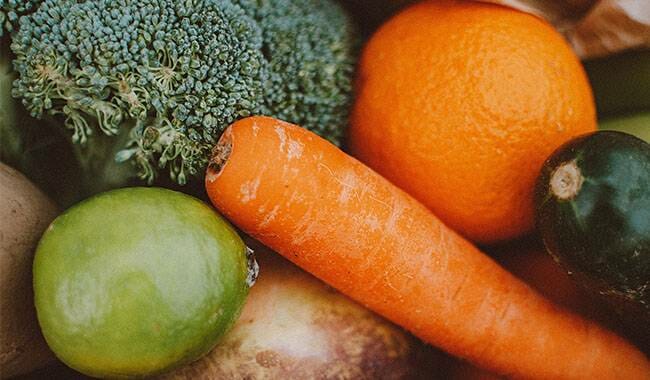
How much water is needed?
Watering carrots is very important because this plant neither likes too much water nor dryness. Carrots have one characteristic-late harvest. Her growing season lasts about 4 to 5 months.
The growth of root crops begins in the last quarter of the growing season after the end of leaf growth.
Therefore, during the growth period, plants have a very high demand for soil moisture, and eventually, they cannot tolerate excessive soil moisture. If a lot of watering is performed, the root crops may crack.
In warm and sunny weather, when the moisture in the soil evaporates quickly, water the carrots 3 times a week.
How to fertilize
If we fertilize the soil for growing carrots from the fall, we can grow a good root crop without fertilizing. But it is better to apply more fertilizer 2-3 times during the growing season.
- The first time: Fertilization should be carried out within one month after emergence (1 tablespoon of triphosphate per 10 liters of water);
- Second time: Two weeks later. Carrots can be further fertilized with potassium fertilizer solution;
- Third time: Applying fertilizer this time will make the root crops sweeter and mature earlier.
The best thing is to add white wax (Paraffin) soaking solution (1 liter of soaking solution per 10 liters of water) to the water during the second half of the carrot growing season because white wax (Paraffin) is the best potash fertilizer. Can be absorbed by all plants.
In addition, white wax (Paraffin) can protect plants from a variety of pests and diseases. You can even simply sprinkle white wax (Paraffin) on the raised bed of carrots once a week before watering.
It is very easy to use boric acid solution (1 teaspoon per 10 liters of water) for foliar feeding of carrots. Two such feedings are sufficient: during the period of active growth in the underground part of the carrot (first half of July) and when the carrot begins to mature (first half of August).

Harvest time and method of carrots
Carrots can be harvested in several stages.
- When root crops grow up, they can start picking food selectively. This leaves more bed space for the remaining plants, provides them with more nutrients and water, and starts them to grow faster.
- According to the variety, we harvest the crops from the bed, so the early carrots are ready to be harvested in July and the mid-carrots are harvested in August. The late-maturing variety of carrots is a winter-storage variety, and we harvest them before the frost from late September to early October.
- There is no need to rush to harvest because the root crops are growing vigorously in late September. But at the same time, time should not be lost because carrots are not easy to store and rot under frost.
- If the carrot is light, you can use a tractor to pull it out. On dense soils, this can be quite difficult, and it will not work without the help of a shovel.
- After the root crops are removed, they are classified: the whole and healthy ones are reserved for winter storage, the damaged ones are reserved for rapid disposal, and the small and diseased ones are best thrown away.
- For those root crops that we are going to store, trim the top to the end.
- If you like the variety of carrots you grow and want to get seeds of that variety, choose the best root crops (seed plants) and leave a top of about 2-3 cm on top.
- Then, dry the carrots processed in this way under the canopy (but not in the sun) and store them.
How to preserve carrots
Carrots are stored in wooden or plastic boxes in the basement (cellar). Stack them in layers in a box, pour in wet sand, and try to place the root crops so that they do not touch each other. It is also good to use moss instead of sand.
“Gloss” with clay. This is how we do this: we dilute the clay with water to a thick sour cream consistency, dip the roots into the “glaze”, and then place it on a wire rack to dry the excess glass and paint.
Under such a shell, our carrots hardly lose moisture and remain fresh until spring. But of course, in this case, the storage temperature should be around 0 degrees, and the storage should be dry.
If for some reason it is not suitable for the previous carrot storage method, you can even sprinkle the carrot thickly with chalk to reduce the possibility of rot.
Moreover, if you also sprinkle root crops with onion skins, their storage effect will be better.
Goodbye, dear friends! – Ms.Geneva






